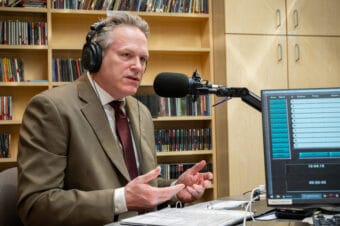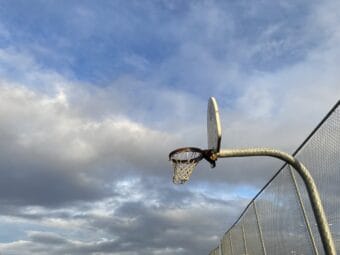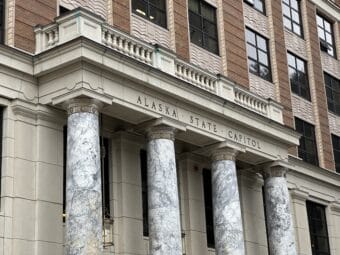
Salmon in the Classroom teaches schoolchildren about one of Alaska’s greatest resources, salmon. The program started about nine years ago in Skagway. When the Skagway Traditional Council got involved about three years ago, they brought in a fish expert named Reuben Cash.
“We get actual salmon, put them in an aquarium, and we bring it to the school so that all the elementary school kids can actually see the different stages of the salmon life cycle, up close and personal,” Cash said.
With COVID-19 disrupting school schedules, the council thought it was best to keep the fish tank in their shop and do all the lessons through Zoom so that staff could keep the tank clean and the hundreds of tiny fish fed.
One of Reuben’s passions is music. So as part of his virtual curriculum, he produces songs that talk about the life cycles of the fish.
One of the more interesting phases of salmon life can be seen as they hatch from the egg. Reuben set up his camera to capture the exact moment when the eggs hatched with a low-light time-lapse setting.
“Their eggs are laid in the gravelly parts of creeks with lots and lots of oxygen,” Cash said. “So these eggs are down, actually underneath in the substrate itself. They’re this interdimensional creature, they live like a worm under the ground, but it’s not in the dirt, it’s spaces in the gravel. So when they hatch, they still have this egg sack attached to them so that they don’t have to go out and find food. They’re really interesting little buggers at that stage. They look very, very alien.”
What do you do with all these little fish when the project is over? Since these salmon are from a hatchery in Juneau, you wouldn’t release them into Skagway’s creeks for fear of mixing genetics or introducing diseases that local salmon wouldn’t be able to fight. So, typically, you’d kill the fish and add their bodies to the local community garden.
“Salmon bring back all these nutrients from the sea, and when they die, they’re their bodies feed all the trees and all the critters and everything. So it’s a lesson to kind of show that circle of life,” Cash said.
But that isn’t what’s happening with this batch. These little fry are getting a lift from Alaska Seaplanes back to their home creek in Juneau, where they will be released into the wild.



